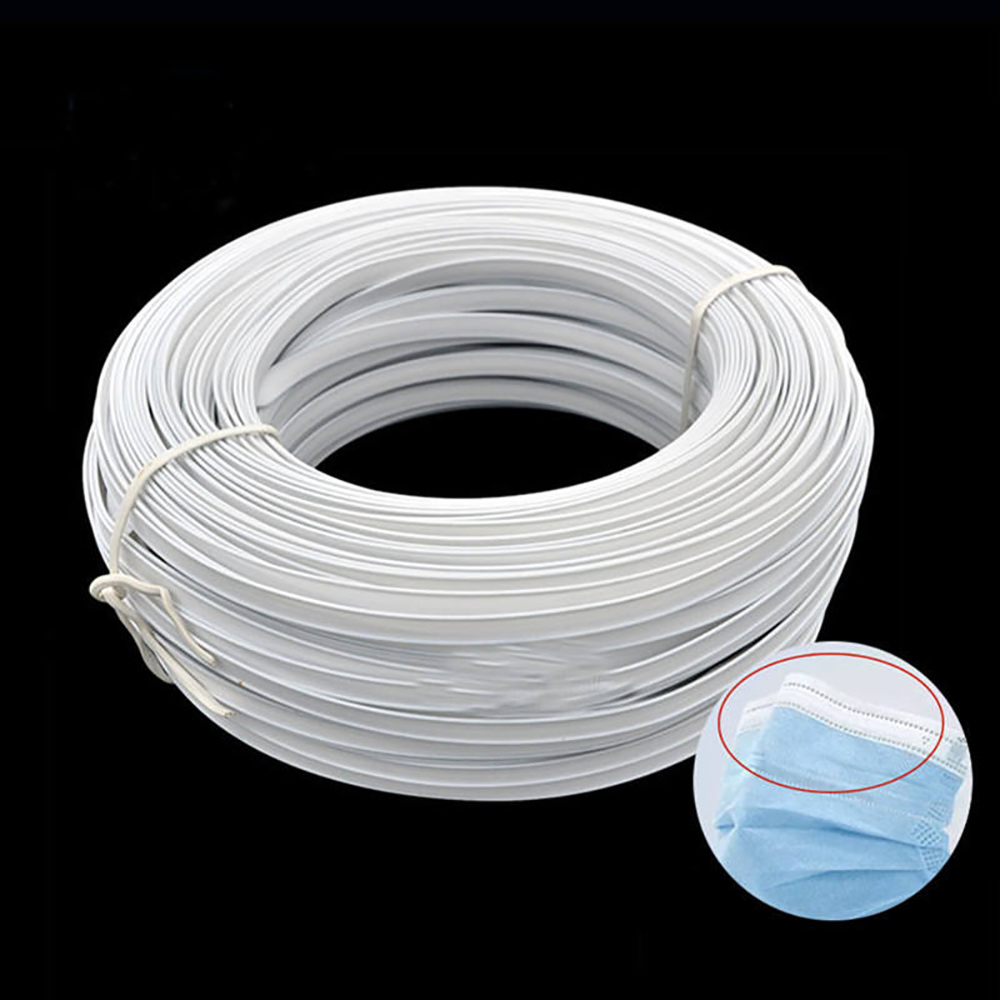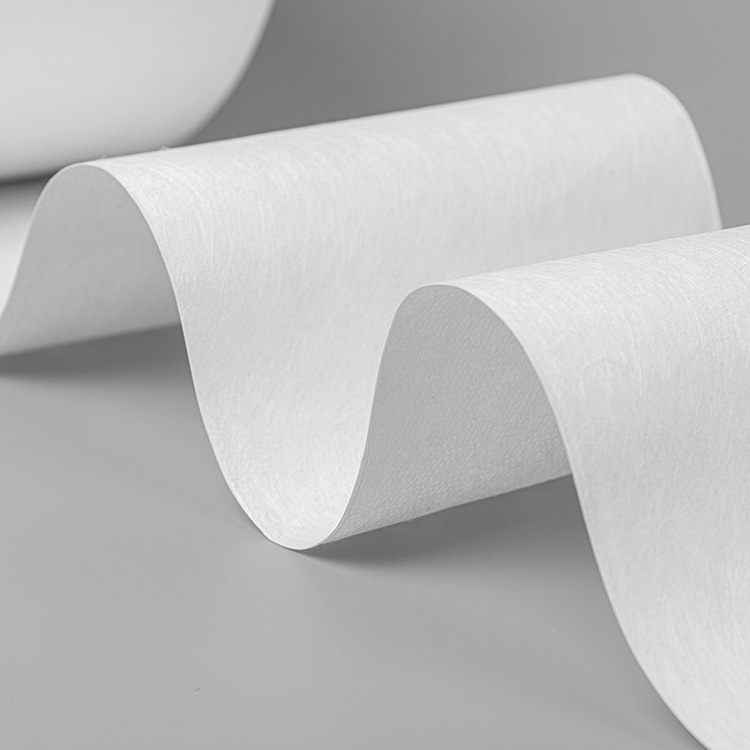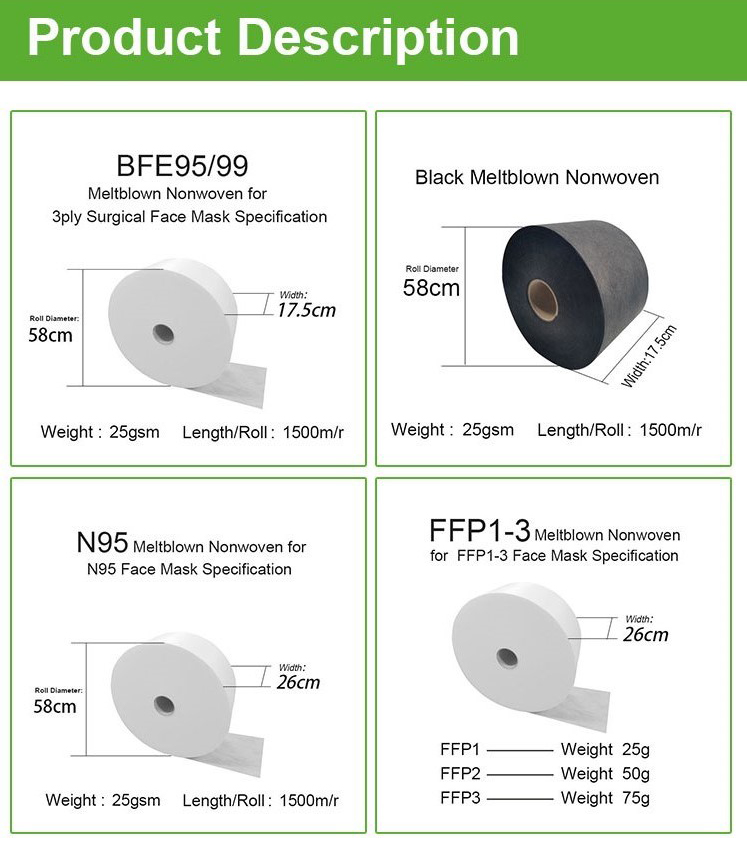
- +8613859957860
- [email protected]
- No.11 Shuangfu Road, Tong’an District, Xiamen, China
| Meltblown fabric specification | |
| Weight | 25gsm |
| Bacterial Filtration Efficiency (BFE) % | ≥99% |
| Particulate Filtration Efficiency(PFE) % | ≥99% |
| Differential Pressure,mm H20/CM2,Breathability | ≤5.0 |
| Resistance to Penetration by Synthetic Blood, mmHg | ≥160 |
| Microbial Cleanliness (cfu/g) | ≤30 |
| Flame Spread | Class 1 |
| Test Standards | |
| EN14683-2019 TYPE IIR, ASTM F2100-2019 L3, YY0469 | |
In the realm of personal protective equipment (PPE), the quality of materials used in manufacturing face masks is paramount. Among these materials, melt-blown nonwoven fabric stands out for its exceptional filtration efficiency and breathability, making it a critical component in the production of high-quality face masks. This article delves into the features and benefits of BFE99 melt-blown nonwoven fabric, a superior choice for 3-ply face masks.
Melt-blown nonwoven fabric is a type of material commonly used in the manufacturing of quality face masks. Unlike traditional fabrics that are produced through spinning or yarn formation, nonwoven fabrics are created directly from fibers or polymers. Specifically, melt-blown nonwovens are made from thermoplastic synthetic polymers, transforming polymer granules into randomly-laid nonwoven mats or fabrics through the melt-blown spinning process.
The melt-blown process is a single-step method that converts polymer chips or granules into a fibrous web structure. This process begins with the heating of polymer granules, typically polypropylene (PP), until they form a molten polymer solution. This solution is then extruded through small nozzles surrounded by high-speed blowing gas, which disperses the molten polymer into ultrafine fibers. These fibers are subsequently blown onto a rotating drum, forming an entangled fibrous web on its surface.
The result is a web of fibers with diameters ranging from 1μm to 10μm. This structure is softer, bulkier, and weaker than other fibrous webs, with smaller pore sizes that provide greater filtration efficiency. Due to its inherent weakness, melt-blown fabric is often used in conjunction with other materials or as part of a composite structure to enhance its strength and durability.
BFE99 (Bacterial Filtration Efficiency 99%) melt-blown nonwoven fabric is renowned for its superior filtration capabilities, blocking 99% of airborne bacteria and particles. Here are some key benefits of this high-quality fabric:
Melt-blown nonwoven fabric is a versatile material used in various applications beyond face masks. Some of its common uses include:
High-quality BFE99 melt-blown nonwoven fabric is a critical component in the production of effective and comfortable 3-ply face masks. Its exceptional filtration efficiency, combined with its breathability and softness, make it an ideal choice for protecting against airborne bacteria and particles. As the demand for reliable PPE continues to grow, the importance of using top-quality materials like BFE99 melt-blown nonwoven fabric cannot be overstated.


Our robust production capacity and dedicated R&D team are geared towards saving your time, allowing you to seize the selling season. With six production lines dedicated to P.P. nonwoven fabric, our monthly output reaches an impressive 1300 tons.
Our sales team is well-versed in international trade, regularly participating in numerous domestic and international trade shows. Additionally, we leverage various online networking platforms to expand our presence and reach in the global market.
Ensuring a steady supply of raw materials, we commit to offering consistently stable pricing. This practice not only guarantees the mutual benefit of both parties involved but also serves as a risk-mitigation strategy in the dynamic landscape of nonwoven fabric trade. Our focus on securing ample raw material reserves empowers us to maintain pricing stability, fostering a reliable and enduring partnership that prioritizes mutual success and minimizes uncertainties associated with trade in this industry.
We boast a comprehensive quality management system alongside highly competitive pricing. Over 95% of our products, tailored to diverse fields, are exported to 30+ countries, meeting their specific requirements. Additionally, we have forged strong business partnerships with renowned global brands.
The OEKO-TEX® Standard 100 is an autonomous testing and certification protocol that covers textile raw materials, intermediates, and final products throughout their production stages. It encompasses various items eligible for certification, including clothing of all kinds, household textiles, bed linens, terry cloth items, textile toys, and more.
Find the more non-woven fabrics from our factory with free custom services at cheapest price.